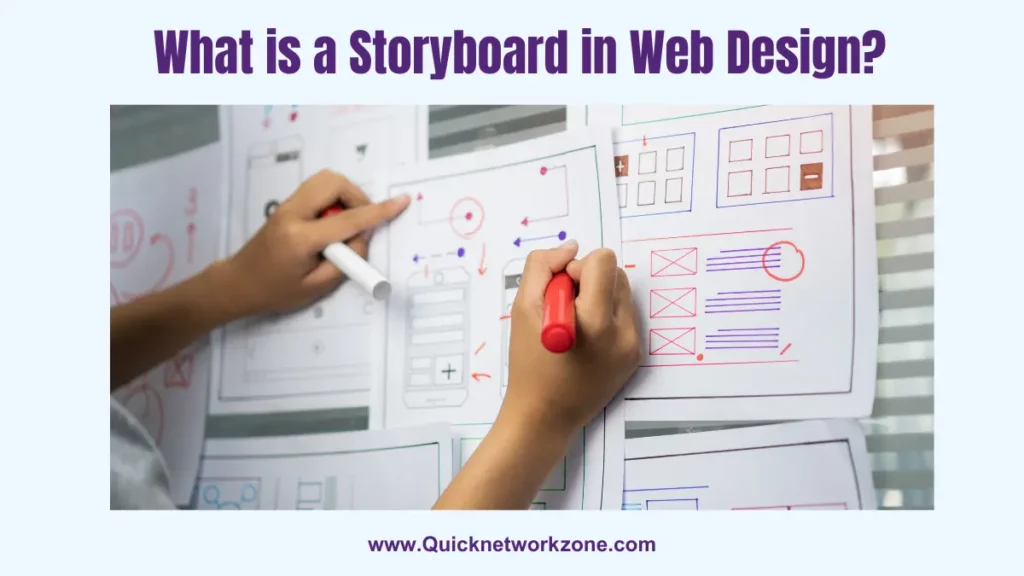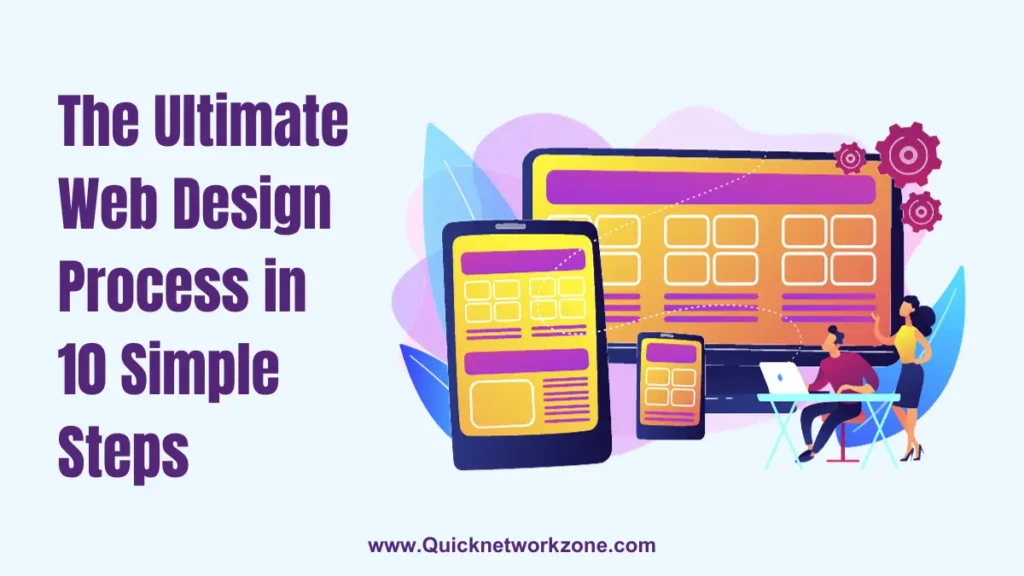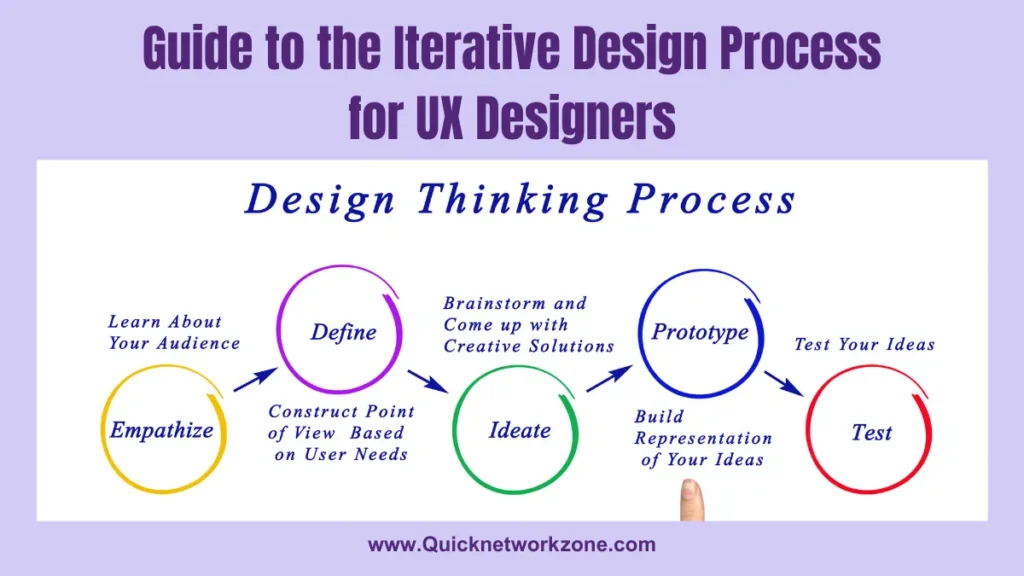Developing a website takes careful planning and execution across multiple stages. Following a structured web design process is crucial for creating an effective online presence that achieves business goals. The four main phases of professional web design are strategy, design, development, and testing & delivery.
The strategy stage focuses on upfront planning activities like identifying objectives, researching the target audience, and creating sitemaps. This phase lays the project foundation before design work begins. The design stage involves user experience planning, wireframing, prototyping, and defining visual branding. Next comes development where the site is coded and built out with features. Finally, testing and delivery encompass quality assurance, launch preparations, and post-launch monitoring.
Each stage serves a distinct purpose and builds on the last. Adequate time and resources must be allocated to each phase. While concurrent activities do occur, core milestones should get completed before rushing forward. Following proven web methodology reduces risk and enhances the end product. The result is a stellar website that successfully engages visitors.
Key Takeaways:
- The 4 main stages of web design are strategy, design, development, and testing & delivery.
- The strategy stage involves planning objectives, defining the target audience, and creating a sitemap.
- The design stage focuses on UI and UX design, including wireframes, prototypes, and visual elements.
- Development brings the design to life by coding the site and integrating features.
- Testing & delivery involves quality assurance, launch preparations, and post-launch monitoring.
In a Hurry? Here’s a Fast Answer for You
The 4 key stages of web design are:
- Strategy – Planning objectives, identifying the target audience, site mapping.
- Design – Focusing on UI/UX design, wireframing, prototyping, visuals.
- Development – Coding the site, integrating features and functionalities.
- Testing & Delivery – Quality assurance testing, launch preparations, post-launch optimizations.
Each stage builds on the previous one to bring a website from initial conception to public launch and beyond. Following proven web design stages ensures thorough planning, smooth development, and a successful end product that engages audiences as intended.
What Are the 4 Stages of Web Design?
Developing a new website involves much more than just coding and creating visual elements. To build an effective site that meets business and user needs, web design follows a strategic, multi-stage process.
The 4 main stages of professional web design are:
- Strategy
- Design
- Development
- Testing & Delivery
Understanding these web design stages helps set clear expectations and organize complex projects into manageable phases. It also ensures no steps get missed on the path from idea to completed website.
Let’s look at each of the 4 key web design stages in greater detail:
Stage 1: Strategy
The strategy stage is all about planning and defining objectives before design and development begin. This phase involves crucial upfront decisions and foundational project work.
Set Goals & Requirements
What is the purpose of the new website? What goals and results is it intended to achieve? Answering these strategic questions allows you to map out required features and functionalities.
Start by gathering input from all stakeholders. Identify must-have elements like ecommerce capabilities, user logins, advanced search, etc. This establishes the website requirements to inform later decisions.
Research Competitors & Target Audience
Conduct competitor analysis to see what other similar websites do well (and poorly). Identify gaps or needs your site can potentially fill.
Also research your target audience. Define user demographics, behaviors, challenges, and desires. Understanding the audience is key to creating a user experience that resonates.
Create a Sitemap
Take all gathered information and create a website sitemap. This outlines the site content and how pages will connect to each other.
A thoughtful sitemap improves SEO and user navigation. Plan page hierarchy, labels, central hubs, and how users will move through the site.
Choose Technology
Consider what technology, platform, and content management system can best bring the new website to life. Make sure the foundation has the capabilities needed for all goals and requirements.
This technology decision impacts costs, development, speed, scalability, security, and much more. Weigh options carefully against strategic needs.
Stage 2: Design
With strategy mapped out, the design stage focuses on aesthetics, branding, layouts, and UX. This is when the look and user experience take shape.
UI and Brand Identity Design
Define the visual identity through branding, style guidelines, imagery, and graphic elements. This builds consistency across pages while allowing for customization.
Determine layouts, header/footer content, navigational UI, and where elements like search bars or CTAs will go. Craft the interface to balance branding and usability.
UX and Interaction Design
Plan how users will interact with the site and key pages like the homepage, product pages, and blog. Map user flows for important tasks and conversion funnels.
Wireframes visualize page layouts and test arrangements. Prototypes allow interactive simulations to refine workflows.
Optimized Content Planning
Plan the content scope, topics, structure, and optimization strategy. Audit existing content if migrating a site. Create outlines for new pages and blogs. Follow SEO best practices.
Identify thin or missing content that needs created. Planning content together with UX improves the relevance and search visibility.
Stage 3: Development
Now development teams build out the website and bring the design to life as a working product. Coding, integrating features, testing, and content implementation occur here.
Front-End Development
Developers code the site front-end including markup, styling, frameworks, and libraries needed to render pages and UI. They implement the design visually and functionally.
Back-End Development
If the site has dynamically generated content like user logins or ecommerce, back-end code handles secure data processing. The front and back-end integrate into one ecosystem.
Feature and Functionality Implementation
Developers work page-by-page enabling elements like forms, carousels, modals, dropdowns, search, etc. to work per the plan. They ensure features appear and perform as intended.
Content Implementation
Copywriters and editors produce optimized content assets like blog posts and product descriptions. They also integrate existing content if migrating an older site’s content onto the new platform.
Quality Assurance (QA) Testing
Extensive QA testing evaluates site functionality, UX, integrations, speed, and more. Identify any bugs or issues before launch. Conduct user acceptance testing with internal stakeholders.
Stage 4: Testing & Delivery
The final phase prepares the finished website for go-live and monitors performance post-launch.
Finalize Launch Checklist
Complete any remaining pre-launch items like setting up analytics, creating social media assets, migrating domains, checking SEO, etc. Optimize pages for performance.
Go Live & Post-Launch Monitoring
Once live, closely monitor traffic, conversions, technical issues, user feedback, and site performance after launch. Optimize pages and UX based on real data.
Ongoing Iterations & Maintenance
Websites require ongoing maintenance like content updates, feature additions, and design refreshes over time. Revisit the site strategy and continue optimizing.
Quick Understanding Table
| Stage | Focus | Timeline | Deliverables |
|---|---|---|---|
| Strategy | Planning, requirements, sitemaps | 2-4 weeks | Sitemap, content outline, tech recommendations |
| Design | Wireframing, prototyping, UI/UX, visuals | 2-5 weeks | Wireframes, prototypes, visual mockups |
| Development | Coding front-end and back-end, integrating features | 1 week to 1 month+ | Coded and functioning site |
| Testing & Delivery | QA, launch prep, post-launch monitoring | 2-3 weeks | Launch checklist and plan, performance reports |
Key Benefits of Following Proven Web Design Stages
When executed thoroughly, moving through strategic web design stages offers many advantages:
Thorough Upfront Planning – Dedicating time to planning sets the project up for success. Identifying requirements and goals ahead of time prevents costly rework down the road.
Smoother Development Process – With a solid strategy and design direction in place first, development moves efficiently. Stakeholders are aligned, and needs are clear.
Reduced Risk – Each phase builds on the last, reducing chances of critical steps being missed. Following web design best practices minimizes missteps.
Better Collaboration – Cross-functional teams can focus on their role’s specialty at each stage. Clear hand-offs keep work flowing smoothly.
Enhanced End Product – websites designed and developed through structured stages have greater consistency. They also better meet audience needs.
Improved Cost Forecasting – Budgeting and timing estimates improve when breaking projects into predictable stages. Resources align better with each milestone.
Professional web design demands careful coordination across many complex, interrelated steps to create a polished final product. Following strategic stages ensures no details slip through the cracks on the road from idea to fully launched website.
Example
-Product customization tool – Allows choosing colors and text for engraving
-Live chat support – Integration with Zendesk, offline form collection
-Subscription portal – Manage monthly delivers and billing details
-SEO optimized – Target 10 keywords [list]
-ADA compliant to WCAG 2.1 level AA standards
Medium Priority
-Appointment scheduler – Customers book grooming sessions
-Smart recommendations – Display suggested products based on prior purchases
-Social media feed integration – Instagram shop #hashtags shown onsite
Low Priority
-Visual product builder – Custom collages with pet images
-Pet profile dashboard – Store preferences and history
Tag less critical features as low priority or phase 2. This steers focus toward launching with a viable minimum viable product (MVP) first.
Conclusion & Next Steps
Creating a successful website requires meticulously executing four fundamental stages: information architecture, design, development, and testing & delivery. Each phase serves a distinct purpose in bringing a digital product from initial plans through post-launch optimization. Following this proven, comprehensive process ensures no crucial steps get missed along the way.
It’s important to invest sufficient time and resources into upfront planning and design foundations before rushing into development. Lean on experts like specialized web design agencies to optimize each stage. With patience and avoiding shortcuts, this phased methodology fosters positive outcomes and delighted users in the long run. Trust the process, stay focused on long-term goals over quick wins, and your audiences will appreciate the results of your diligent efforts.
Next steps you can take:
- Audit your current website against each design stage. Identify any gaps.
- Assemble a project team with specialized skills for each phase.
- Create a timeline and budget aligned with the 4 stages.
- Contact web design agencies if needing help.
Thoughtful web design takes time but yields stellar results. By mastering these 4 website development stages, you’ll be set up for online success.
Frequently Asked Questions About Web Design Stages
Many clients and stakeholders have questions about the typical web design process and phases. Here are answers to some often asked questions:
How Long Does Each Stage Take?
Durations vary significantly based on project scope and complexity. Typically though:
- Strategy may take 2-4 weeks.
- Design around 2-5 weeks.
- Development 1 week to over a month.
- Testing & Delivery often 2-3 weeks but depends on needs.
Allow extra time upfront for adequate planning and strategy.
What Deliverables Come From Each Stage?
Typical phase deliverables are:
- Strategy: sitemap, content outline, technical recommendations
- Design: wireframes, prototypes, visual mockups
- Design: coded site ready for content, QA tested
- Testing: Launch checklist, go-live plan, post-launch report
Deliverables help clarify phase completion and move work to the next stage.
How Much Does Each Stage Cost?
Costs fluctuate based on effort, agency rates, and site needs. Typically though:
- Strategy is 15-25% of total project cost
- Design 25-35%
- Development 35-50%
- Testing 5-15%
Development often consumes the biggest budget allocation. Allow enough time and resources.
Can Any Stages Happen Concurrently?
Yes, some overlap in activities is common. Design and content strategy may progress together, development and testing can occur simultaneously too.
But each stage’s core focus should be complete before moving onto the next. Don’t rush key phases.
How long should each stage take?
Timelines vary significantly based on project scope, goals, and complexity. However, allocate extra time upfront for strategy and design foundations.
What deliverables come from each phase?
Typical deliverables per stage include sitemaps, wireframes, prototypes, coded site, launch checklist, and performance reports.
Can any stages happen at the same time?
Some concurrent activities do occur, but each core stage milestone should get completed before moving to the next. Don’t let tasks overlap too much.
Who should be involved in each stage?
While roles differ per project, common phase leads are:
- Strategy – Project managers, sales, content strategists
- Design – UI/UX designers, graphic artists
- Development – Software architects, developers
- Testing – QA engineers, product owners
What if we don’t have internal resources for all stages?
Leverage web design agencies to cost-effectively supplement any capability gaps your team has. They provide end-to-end services or can assist with specific phases as needed.
Start Your Website Project Right
Ready to elevate your online presence? Explore our expert UI/UX design and WordPress development services at Quick Network Zone. Don’t let a poorly crafted website be the cause of lost business opportunities. Let’s transform your digital space and boost your success together. Contact us now to turn your vision into a stunning reality!



![Responsive Web Design: Best Practices and Considerations [3 Examples Included] Responsive Design: Best Practices and Considerations](https://quicknetworkzone.com/wp-content/uploads/2023/11/2-1024x576.webp)
